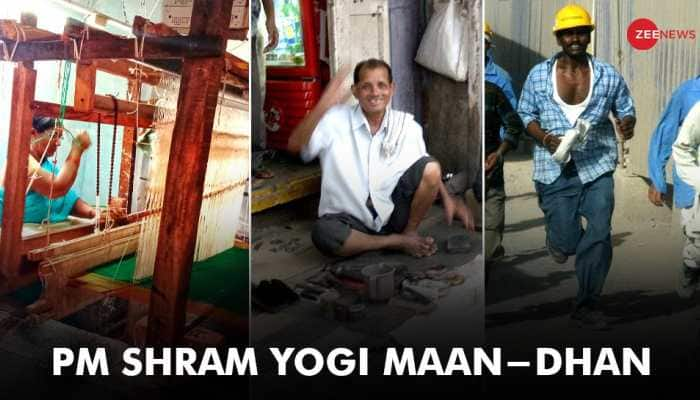ISRO trying to contact Vikram Lander, 12 days still left; Chandrayaan-2 Orbiter working fine
With Chandrayaan-2 Orbiter locating the Vikram Lander on the Moon's surface, Indian Space Research Organisation (ISRO) is making all efforts to establish communication with the same. ISRO chief K Sivan had on Sunday announced that the Orbiter had taken a thermal image of Vikram.
Trending Photos
) Image Source: ISRO
Image Source: ISRO New Delhi: With Chandrayaan-2 Orbiter locating the Vikram Lander on the Moon's surface, Indian Space Research Organisation (ISRO) is making all efforts to establish communication with the same. ISRO chief K Sivan had on Sunday announced that the Orbiter had taken a thermal image of Vikram.
Vikram Lander was just 2.1 kilometres above the lunar surface when it lost contact with ISRO, throwing a pall of gloom over the Indian space agency, but Sunday's development has rekindled hopes.
ISRO had released a statement on Saturday, a few hours after Vikram lander lost contact, stating that the Orbiter would continue with its mission. The perfect launch of Chandrayaan-2 and the technological capabilities developed by ISRO also ensured that the Orbiter's life was now seven years and not just one year.
"Chandrayaan-2 mission was a highly complex mission, which represented a significant technological leap compared to the previous missions of ISRO, which brought together an Orbiter, Lander and Rover to explore the unexplored south pole of the Moon. Since the launch of Chandrayaan-2 on July 22, 2019, not only India but the whole world watched its progress from one phase to the next with great expectations and excitement. This was a unique mission which aimed at studying not just one area of the Moon but all the areas combining the exosphere, the surface as well as the sub-surface of the moon in a single mission," the statement read.
"The Orbiter has already been placed in its intended orbit around the Moon and shall enrich our understanding of the moon’s evolution and mapping of the minerals and water molecules in the Polar Regions, using its eight state-of-the-art scientific instruments. The Orbiter camera is the highest resolution camera (0.3m) in any lunar mission so far and shall provide high-resolution images which will be immensely useful to the global scientific community. The precise launch and mission management has ensured a long life of almost seven years instead of the planned one year. The Vikram Lander followed the planned descent trajectory from its orbit of 35 km to just below 2 km above the surface. All the systems and sensors of the Lander functioned excellently until this point and proved many new technologies such as variable thrust propulsion technology used in the Lander. The success criteria was defined for each and every phase of the mission and till date, 90 to 95 per cent of the mission objectives have been accomplished and will continue to contribute to Lunar science, notwithstanding the loss of communication with the Lander," the space agency stated.
On July 22, 2019, ISRO launched Chandrayaan-2 with the Orbiter, Vikram Lander and Pragyan Rover. The Lander was scheduled to land on the Moon's South Pole, a mission never attempted.
Stay informed on all the latest news, real-time breaking news updates, and follow all the important headlines in india news and world News on Zee News.
Advertisement
Live Tv
Advertisement







)
)
)
)
)
)
)
)
)
)
